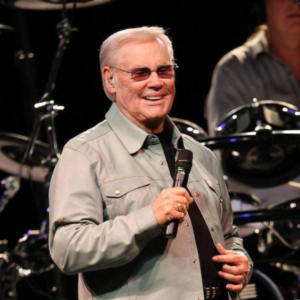
George Jones, the undisputed “Possum,” is a name synonymous with heartbreak, whiskey, and the raw, emotional core of country music. His voice, a weathered instrument etched with life’s trials, has captivated audiences for decades. When we speak of Jones, we’re discussing an artist who didn’t merely sing about heartache; he embodied it, transforming personal pain into a universal language of sorrow.
Background
Among his vast discography, Love Lives Again stands as a poignant testament to Jones’ mastery of the ballad. Released in 1973 as part of the album Nothing Ever Hurt Me (Half As Bad As Losing You), the song arrived at a pivotal moment in Jones’ career. The 1970s marked a period of significant artistic and commercial success for the singer. His raw, emotionally charged performances coupled with the lush, orchestral arrangements pioneered by producer Billy Sherrill created a sound that defined the era and cemented Jones’ status as a country music titan.
The song’s title, Love Lives Again, presents a paradox. It suggests a renewal of a romantic relationship, a phoenix rising from the ashes of heartbreak. Yet, given the context of Jones’ oeuvre and the melancholic undertones often present in his music, the listener is immediately drawn into a world of bittersweet longing. Could this be a hopeful narrative of second chances, or a haunting exploration of the cyclical nature of love and loss? The song’s lyrics, penned by Carmol Taylor, Norris Wilson, and George Richey, will undoubtedly provide the answers.
The heart of any country ballad lies in its narrative, and Jones was a master storyteller. His ability to convey complex emotions with a simple phrase is unparalleled. We can anticipate that Love Lives Again will unfold a tale of longing, regret, and perhaps a flicker of hope. Jones’ vocal performance, characterized by its raw vulnerability and emotional depth, will undoubtedly elevate the song to a level of emotional intensity that few artists can match.
The production, helmed by the legendary Billy Sherrill, is another crucial element to consider. Sherrill’s signature sound, characterized by lush strings, pedal steel guitar, and a rich sonic tapestry, provided the perfect backdrop for Jones’ vocals. We can expect the arrangement of Love Lives Again to be both opulent and understated, allowing the singer’s voice to take center stage while enhancing the song’s emotional impact.
Video
As we delve deeper into the lyrics and musical intricacies of Love Lives Again, we will explore how the song fits within the broader context of Jones’ discography. We will examine the thematic and stylistic elements that connect this song to his earlier and later works, as well as its impact on the country music landscape.
Ultimately, our goal is to appreciate the song not just as a standalone piece, but as a reflection of the artist and the era that produced it. By understanding the context in which Love Lives Again was created, we can gain a deeper appreciation for its beauty, complexity, and enduring power.